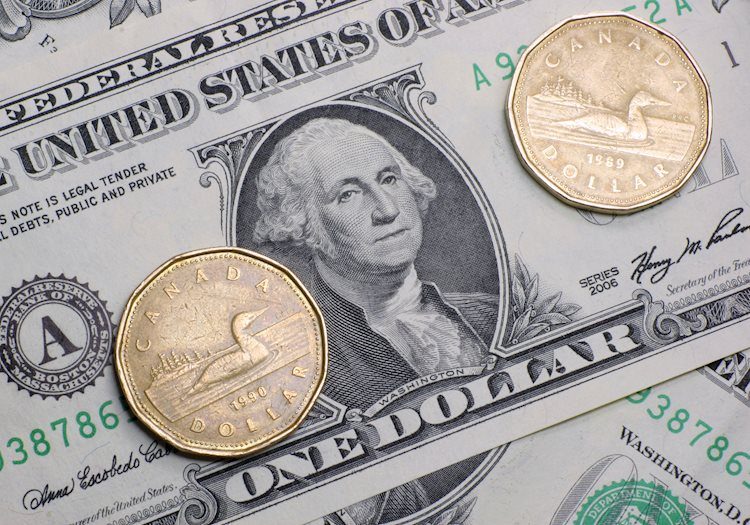- The Canadian Dollar tested back into recent lows and struggled to find gains.
- Canada’s economic data docket remains incredibly thin in the near term.
- Policy rate divergence is set to be the Loonie’s primary driver heading into 2025.
The Canadian Dollar (CAD) continued its soft stance on Friday, easing into familiar near-term lows and shedding one-quarter of one percent against the US Dollar. The Loonie is entering a lull period with functionally no releases on the data docket in the immediate future, leaving CAD traders to battle it out near multi-year lows.
Following the midweek market closure for the Christmas holiday, a soft-footed market footprint remains ahead of the New Year’s midweek holiday next Wednesday.
Daily digest market movers: Battered CAD holds near multi-year lows
- The Canadian Dollar continues to churn chart paper near 56-month lows, bolstering the USD/CAD rate back above the 1.4400 handle.
- Constrained holiday markets will bleed slowly into the new year, but volumes to remain crimped for the time being.
- Canadian economic data is entirely absent from the release schedule next week.
- The upcoming New Year’s midweek market closure will further hobble market flows.
- The Bank of Canada (BoC) is expected to continue easing rates, while the Federal Reserve (Fed) is poised to slowe the pace of cuts in 2025, widening the policy rate divergence currently pummeling the Loonie.
Canadian Dollar price forecast
The Canadian Dollar is back into the low side to wrap up the Christmas trading week, falling against the Greenback and pushing USD/CAD into the high end of recent chart congestion. The pair continues to drift higher as bids trade well north of the 50-day Exponential Moving Average (EMA) near 1.4100.
December is poised to close out deep in the green and will notch in a fourth consecutive gain month for USD/CAD as the Loonie crumples. Both Greenback bidders and Loonie shorts will target a long-term barrier near 1.4700, where the pair would be pushing into its highest bids in over 20 years. For now, the uptrend must overcome December’s peak of 1.4467.
USD/CAD daily chart
Canadian Dollar FAQs
The key factors driving the Canadian Dollar (CAD) are the level of interest rates set by the Bank of Canada (BoC), the price of Oil, Canada’s largest export, the health of its economy, inflation and the Trade Balance, which is the difference between the value of Canada’s exports versus its imports. Other factors include market sentiment – whether investors are taking on more risky assets (risk-on) or seeking safe-havens (risk-off) – with risk-on being CAD-positive. As its largest trading partner, the health of the US economy is also a key factor influencing the Canadian Dollar.
The Bank of Canada (BoC) has a significant influence on the Canadian Dollar by setting the level of interest rates that banks can lend to one another. This influences the level of interest rates for everyone. The main goal of the BoC is to maintain inflation at 1-3% by adjusting interest rates up or down. Relatively higher interest rates tend to be positive for the CAD. The Bank of Canada can also use quantitative easing and tightening to influence credit conditions, with the former CAD-negative and the latter CAD-positive.
The price of Oil is a key factor impacting the value of the Canadian Dollar. Petroleum is Canada’s biggest export, so Oil price tends to have an immediate impact on the CAD value. Generally, if Oil price rises CAD also goes up, as aggregate demand for the currency increases. The opposite is the case if the price of Oil falls. Higher Oil prices also tend to result in a greater likelihood of a positive Trade Balance, which is also supportive of the CAD.
While inflation had always traditionally been thought of as a negative factor for a currency since it lowers the value of money, the opposite has actually been the case in modern times with the relaxation of cross-border capital controls. Higher inflation tends to lead central banks to put up interest rates which attracts more capital inflows from global investors seeking a lucrative place to keep their money. This increases demand for the local currency, which in Canada’s case is the Canadian Dollar.
Macroeconomic data releases gauge the health of the economy and can have an impact on the Canadian Dollar. Indicators such as GDP, Manufacturing and Services PMIs, employment, and consumer sentiment surveys can all influence the direction of the CAD. A strong economy is good for the Canadian Dollar. Not only does it attract more foreign investment but it may encourage the Bank of Canada to put up interest rates, leading to a stronger currency. If economic data is weak, however, the CAD is likely to fall.
Read the full article here


